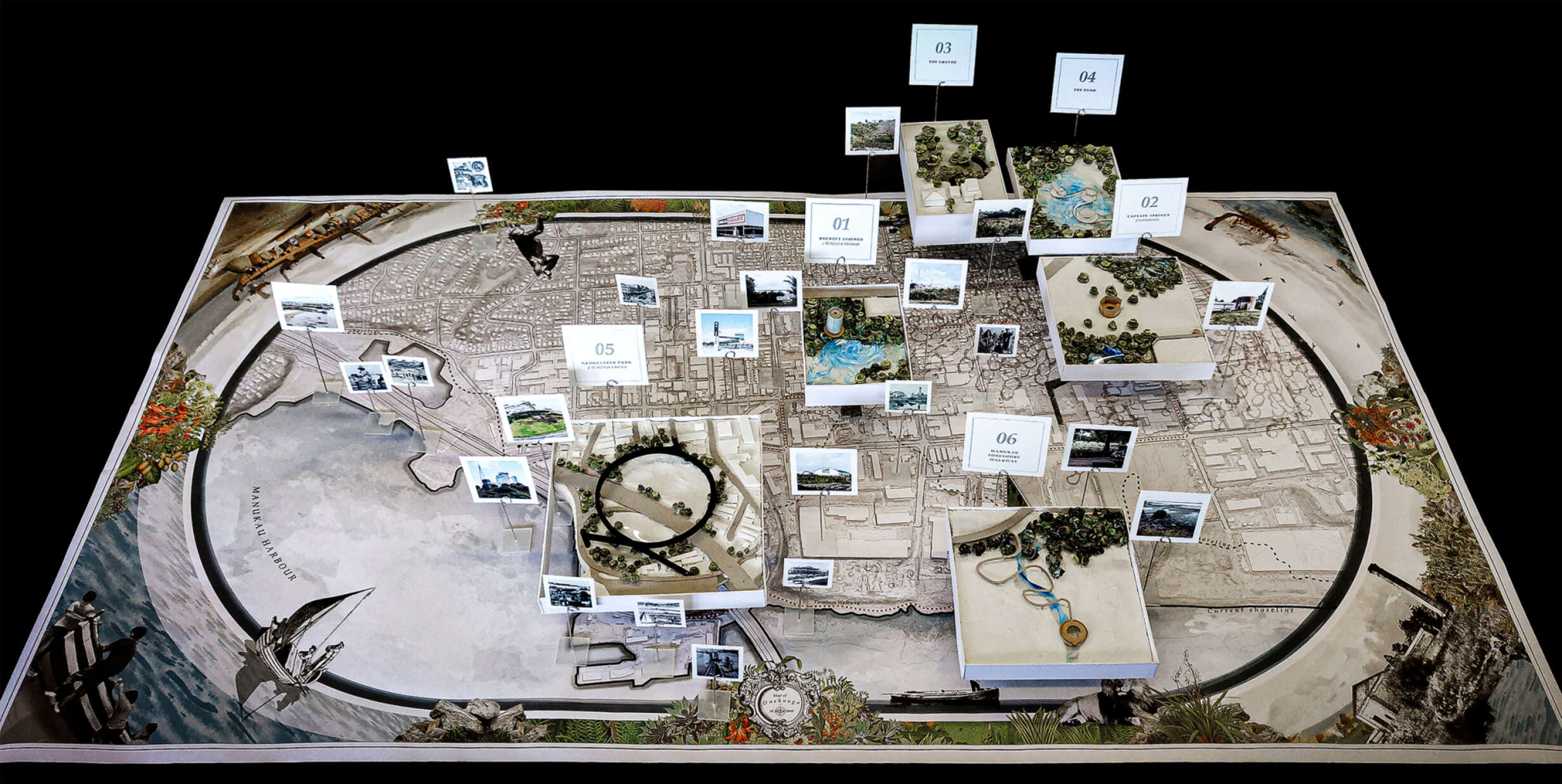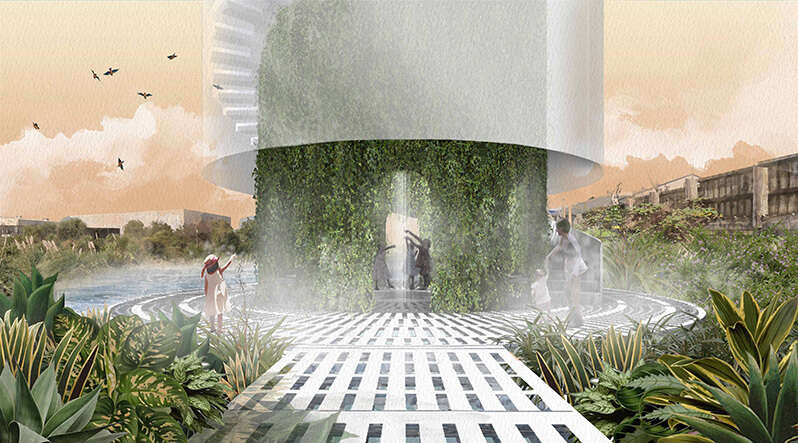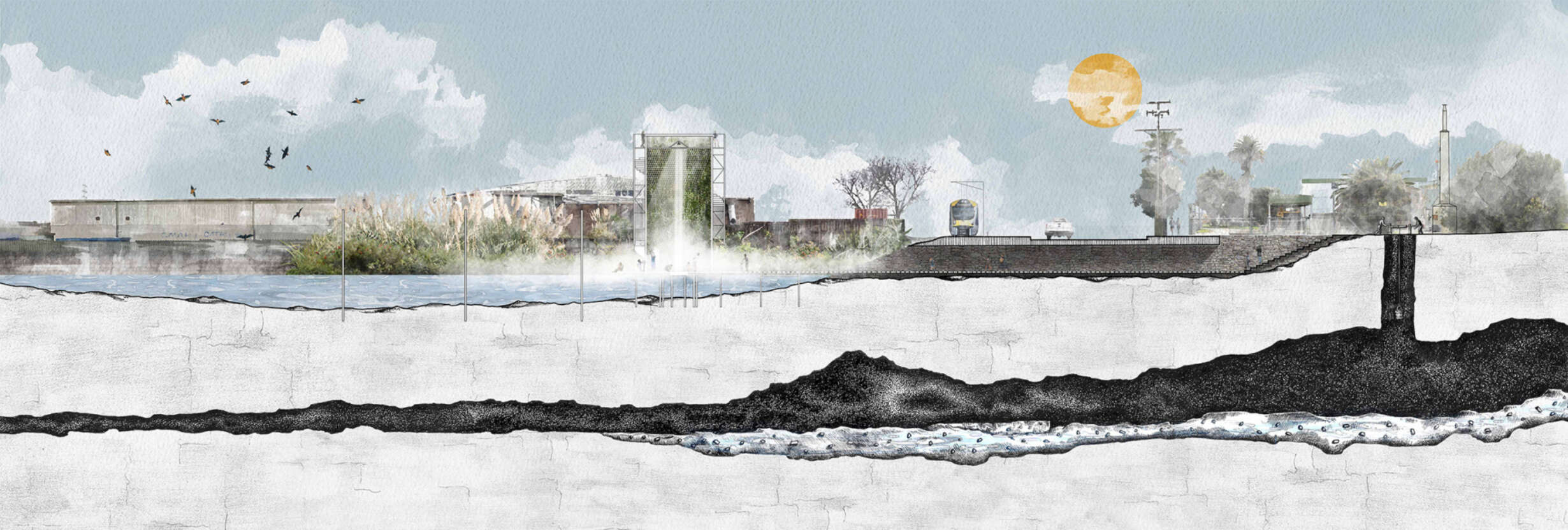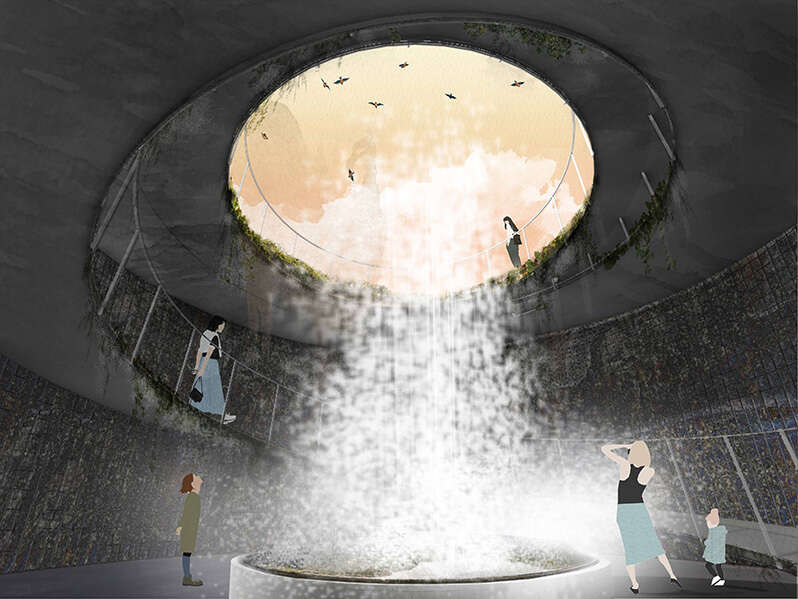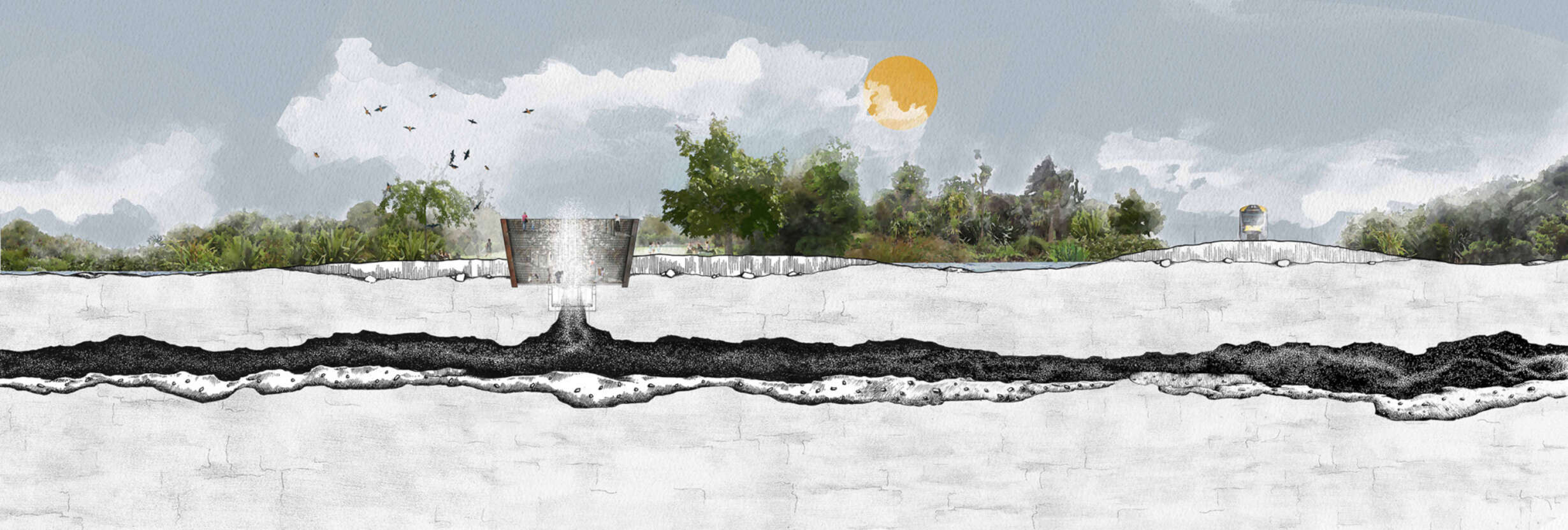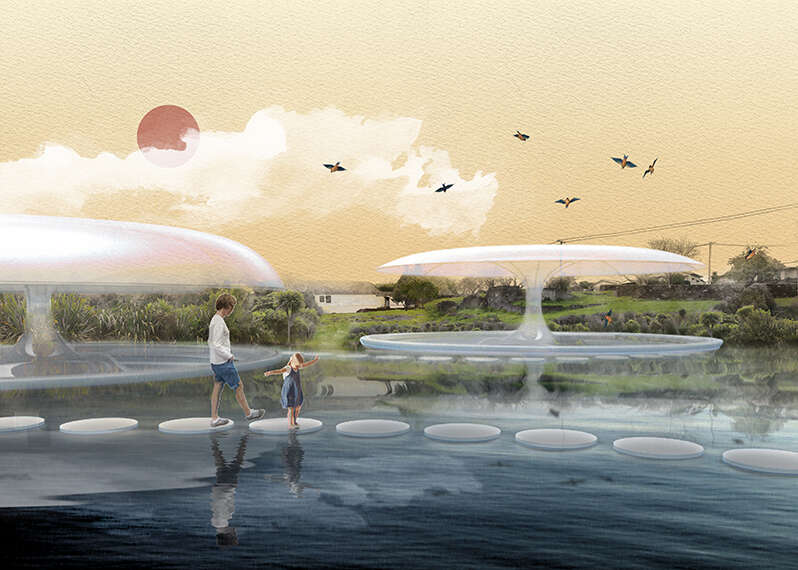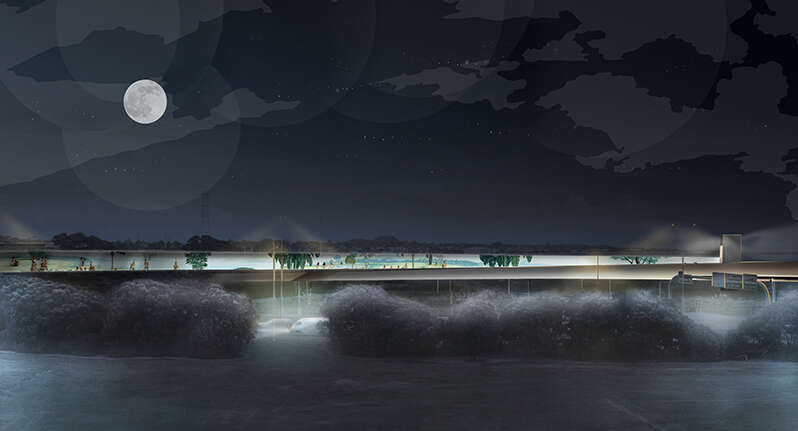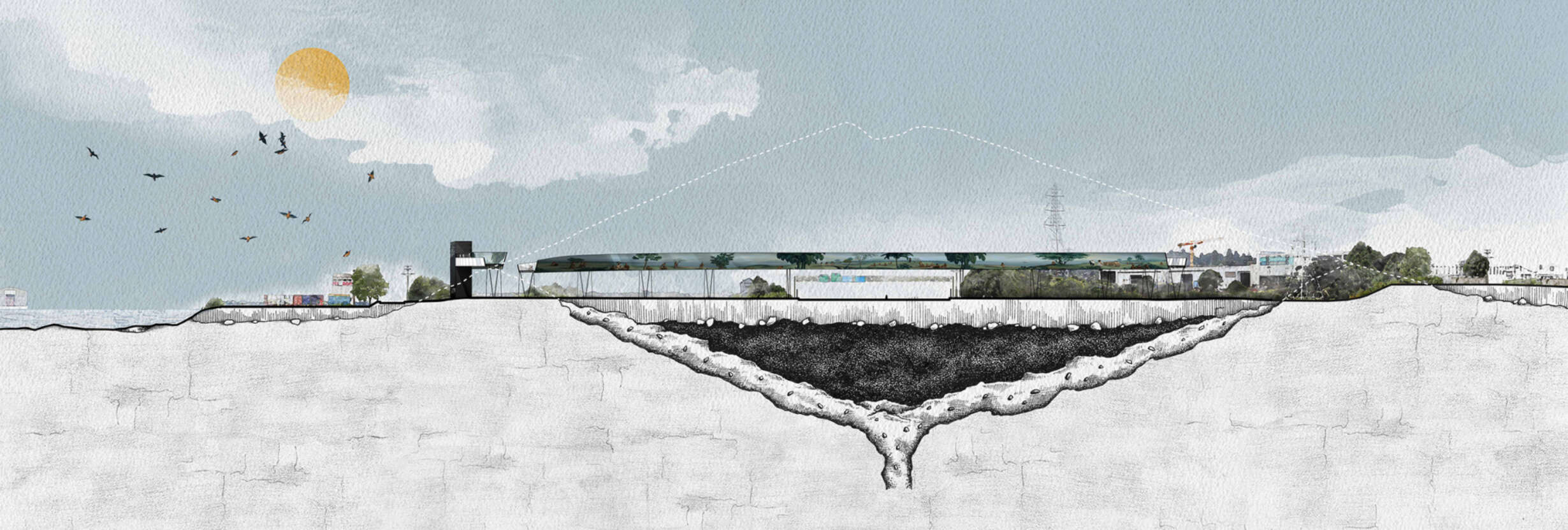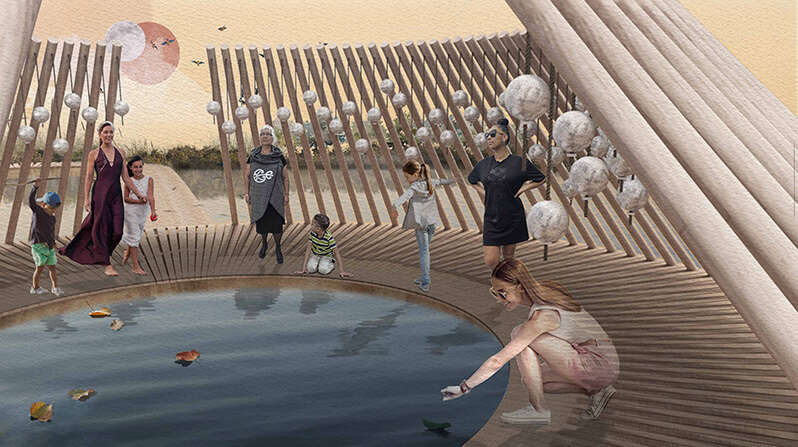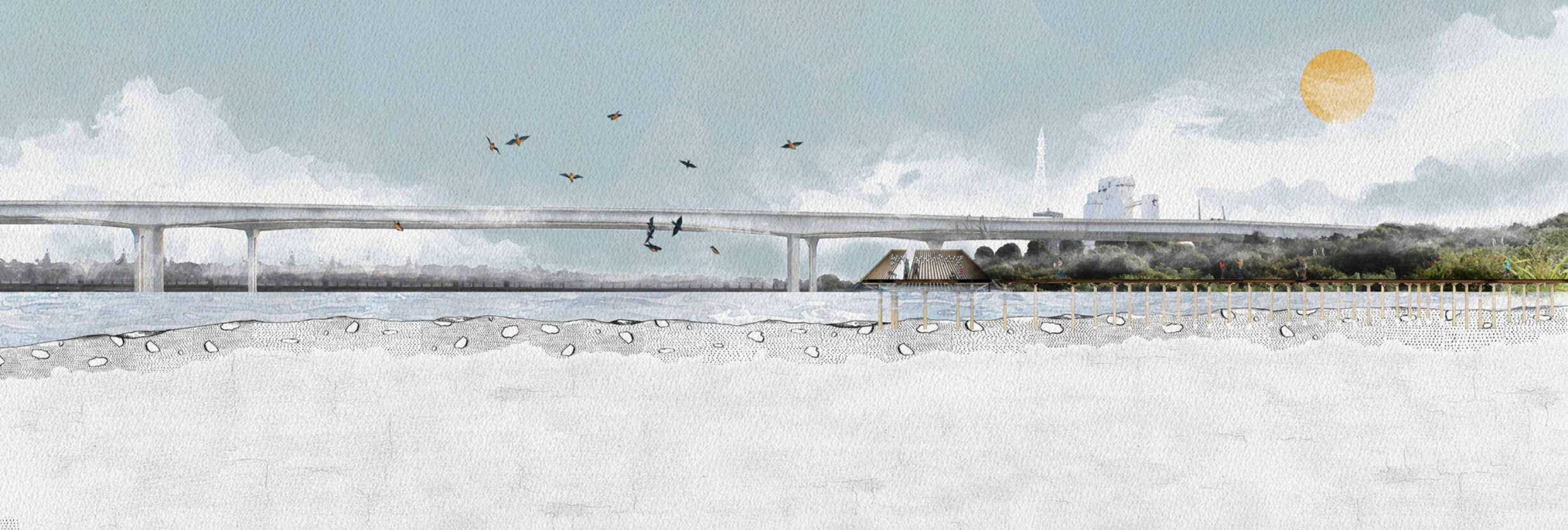Finding the Mauri: Reconnecting Onehunga’s aquifers and subterranean landscape to cultural narratives
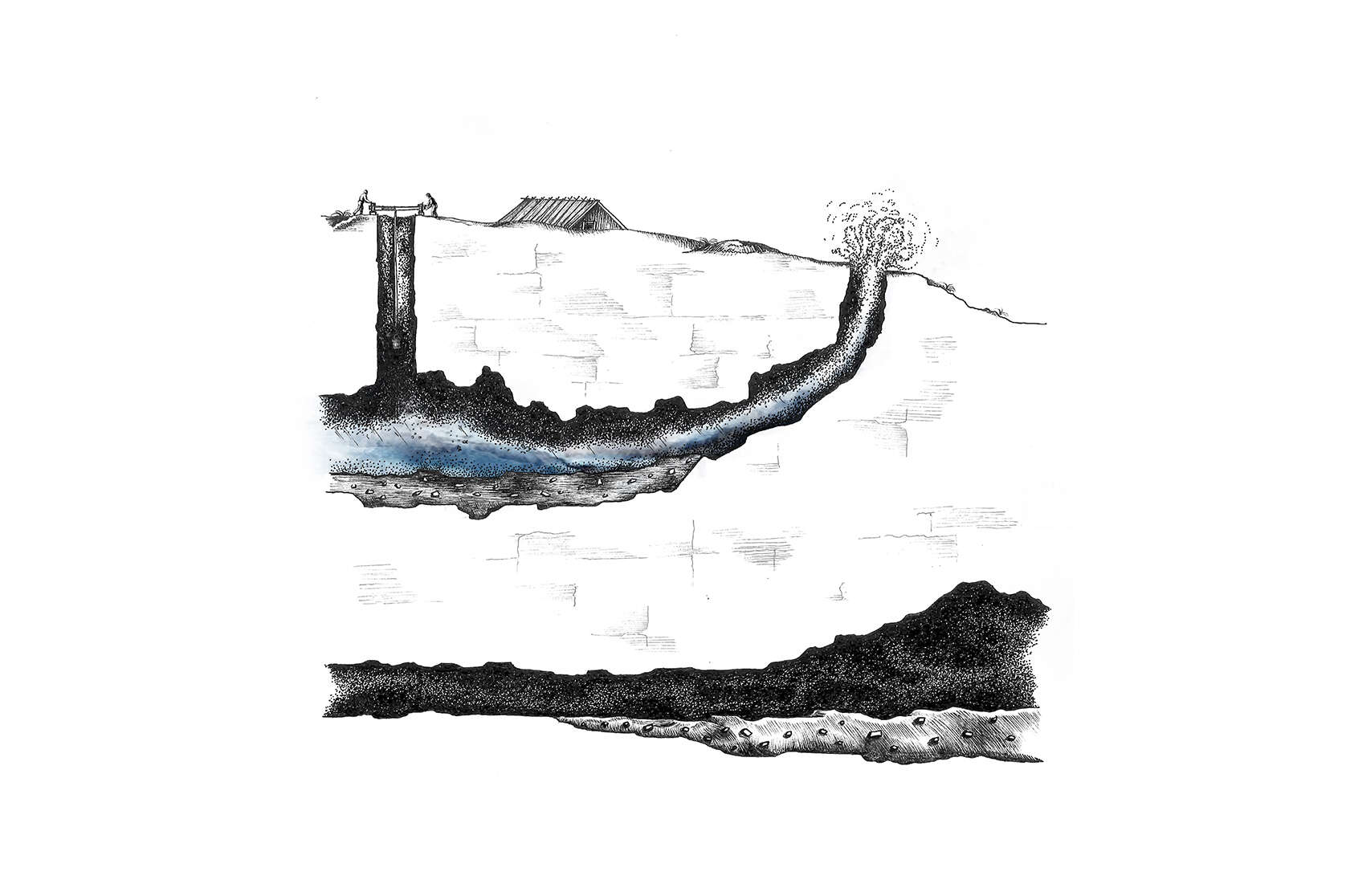
Onehunga began on the shoreline of the Manukau Harbour at a place where bubbling springs formed freshwater pools in the fertile volcanic soils of the Maungakiekie volcanic field. Māori called this place ‘one unga’ - 'landing beach'. It was the largest Māori papakāinga (settlement) in the district, the gardens thriving with fresh produce, the shore lined with canoes and a constant supply of clean spring water that seeped through the aquifers from Maungakiekie (One Tree Hill) and Rarotonga (Mt Smart).
Today, Onehunga shoreline is an industrial estate, asphalt and concrete covering its old gardens. Where children once played - trucks, buses, diggers and forklifts now scurry about.
The edge of the Manukau Harbour is on the verge of becoming more industrialised by the current proposal of the East-West highway along the shoreline, which will further obliterate the few fragments left of the old shore: springs, streams and volcanic tuff crater. In the face of this disappearing natural landscape and desecrated identity, I want to find ways to restore the historic life essence and charm of Onehunga.







